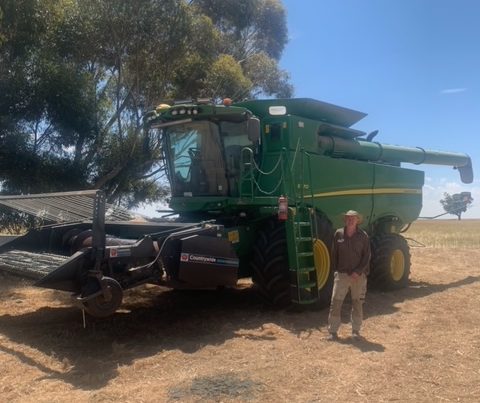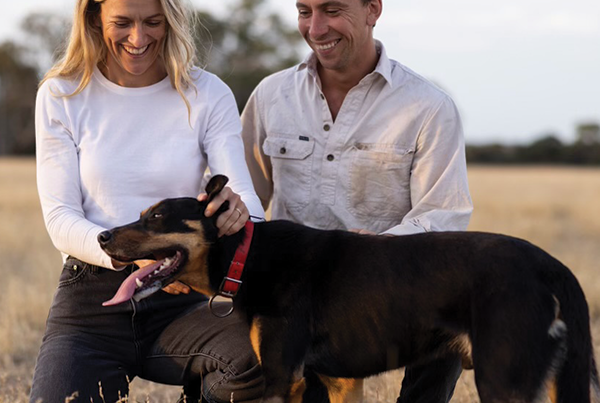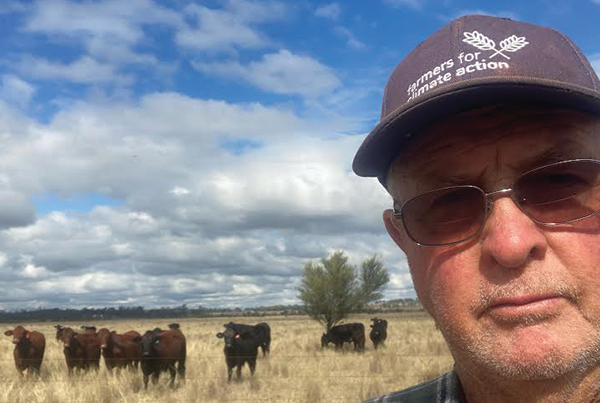At a glance
Who: Meg Caffin, Brackenhurst Farms
What: Angus Beef Cattle
Where: Tarwin Lower, South Gippsland, Vic
Can you tell us about your property/enterprise?
We run a small beef cattle enterprise along the sandy soiled and high rainfall coastline of South Gippsland. My sister and I took over the farm in 2016 after my Dad sadly lost his battle with cancer. He wasn’t a traditional farmer and the farm had been leased out to a local farmer for many years, running the farm using fairly traditional grazing practices. In taking on the farm, we recognised the potential of the property to be just as productive, yet with an entirely different and more ecological approach. So, we teamed up with a local farm manager, Nic Paul, and set about refocusing our decision making towards improving soil and pasture health, rather then stock numbers and turnover. We now run just as many head on our property with far greater benefits.
What are some of the opportunities you see for your business/property in coming years?
Our opportunities are more environmentally focussed. We derive our main income from sale of beef cattle but also supplement this with on-farm holiday accommodation. It’s a very off-grid, back to nature style of offering which greatly appeals to families and those looking to disconnect from modern life. This means that we have a good opportunity to improve the way we farm our cattle to capitalise on our natural assets so that it supports our diversified income base.
With the need to look at climate adaptation and the fact that we adjoin some high biodiversity value coastal park, our opportunities lie in improving our vegetation corridors for biodiversity, retaining soil moisture by building up soil organic material and protecting our large old trees. Given we’re in sandy country, there is very limited capacity for us to be involved in soil carbon farming. As a result, our approach has been to focus on improving the overall health of the soil, quality and diversity of pastures and quality of vegetation corridors. While we’ve made some pretty big improvements, there’s still a way to go.
And what are your main challenges now, and into the future?
The biggest challenge by far is climate change and therefore variability in rainfall and temperatures. We are starting to see the impacts of this on certain indigenous tree species which are starting to become more vulnerable. Given our proximity to the coastal park, we are also facing challenges with pests, particularly deer, foxes and rabbits. We have a very active landcare group who provide significant support to landholders to help with this, but revegetation has now become incredibly difficult because of the deer and rabbits.
Another challenge I continually face is that I’m not from a farming background. I run my own consultancy business focussed on greening cities, so I’ve hit a pretty steep learning curve these last few years. This has meant some minor failures along the way and also coming up against some in-grained traditional thinking around how best to farm. I’ve been very lucky to be supported by a farm manager who is on the same page so we’ve been learning together.
How has climate change impacted your farm business?
We’ve had some whopping storms in Victoria over the last few years that brought some pretty heft winds. Interestingly, and I don’t have any data to support me on this, the direction of the strong winds has been slightly different and its significantly impacted various pieces of farm infrastructure, not to mention the loss of some significant old trees.
And because we need to build climate resilience into our business model, we have made sure to diversify the income component of our business. It means that when leaner drier times arrive, we can appropriately reduce stock numbers to continue to manage our soil and pasture health, while carrying on the business.
What are some of the on-farm adaptations or changes you’ve been employing in recent years and what’s driving them? How successful have they been, and what benefits have you seen as a result?
The first adaptation we made was to reduce overall stock numbers and rotationally graze in order to firstly improve pasture cover. We started off just fattening steers and moving them off farm by winter, which worked well for our business model. We also literally just stopped spreading out any urea or super. I’ve since heard that this probably wasn’t an ideal scenario for soil health – a bit like going cold turkey – but the pasture quality and diversity has improved significantly year on year.
We’ve been using an organic fertiliser for a few years and have now transitioned to NutriSoil this year which we will now trial for a minimum of two years. We’ve significantly controlled the spread of capeweed and only have small outbreaks now.
Without being able to identify cause and effect directly, I would suggest that reducing stock numbers in our cold wet winters and rotationally grazing has probably been the biggest driver of change. We are undertaking a baseline comprehensive soil test in the next few months to use as our base case to see future change, particularly in microbial activity.
We are also now experimenting with pasture diversification and direct seeding into existing pasture without spraying. This has seen varied results, predominantly because of the kikuyu’s voraciousness, but overall made a positive change. We trialled a local contractor this year to utilise his purpose-built seeder that creates a competition free seed bed, while ensuring minimum soil disturbance. Results have been very promising, though we are cognisant of the fact that we’ve had wonderful spring rainfall.
What are your hopes for Ag in Australia, into the future?
My biggest hope is that the principles of sustainable, regenerative or ecological based agriculture become more mainstream. The opportunities, particularly in extensive grazing systems like ours, to retain productivity while working with, rather than against, our ecological systems is pretty significant and very exciting. I’d like to see more sensible approaches to monetising climate change adaptation and mitigation practices for farmers. We have the capacity to adopt pretty simple measures that make a great difference, such as looking after our soils, and yet the current carbon markets are complicated and expensive to comply with.






